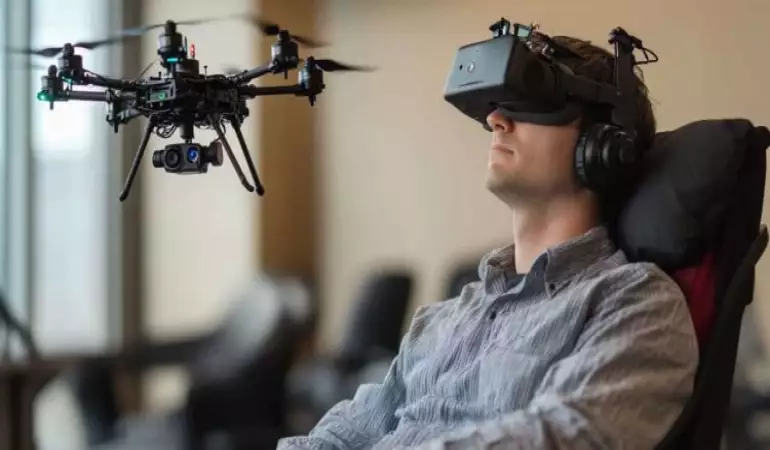New scientific breakthrough: paralysed man mind-controlled drone
A paralysed man with electrodes implanted in his brain manages to pilot a virtual drone through a complex obstacle course. He did this by simply imagining moving his fingers while his brain signals were interpreted by an artificial intelligence (AI) model. The interpreted brain signals were used by the AI to control the virtual drone.
January 22, 2025 09:37
BCI opens up new opportunities for paralysed people
In recent years, research into the brain-computer interface (BCI) has made great strides, allowing paralysed people to accurately control a mouse cursor and dictate speech to computers by imagining they are writing words with a pen.
However, BCIs are not yet very promising in complex applications with many inputs.
How did the experiment go?
Researchers at the University of Michigan developed an algorithm that allows a user to trigger four separate signals by imagining that they are moving their fingers and thumb.
The anonymous man who tested the technology has tetraplegia due to a spinal cord injury. He has already been fitted with the Blackrock Neurotech BCI, which consists of 192 electrodes implanted in the area of the brain that controls hand movements.
An IoT model was used to represent the complex neural signals produced by the electrodes.
The participant learned to think about moving the first two fingers of one hand, creating an electrical signal that can be amplified or attenuated. Another signal was generated by the second two fingers and another two by the thumb.
These were enough to allow the man to control the virtual drone with his thoughts alone and, with practice, to control it expertly over an obstacle course.
The experiment could have been carried out with a real drone, but for simplicity and safety reasons it was virtual.
Plenty of room for improvement
"For the participant, it was like realising a dream that he thought was lost when he was traumatised. He had a passion and a dream to fly. He seemed very empowered and empowered; he told us to make videos and send them to his friends," said Matthew Willsey, the researcher who led the study.
While the results are impressive, there is still a long way to go before the BCI they developed can be used reliably for complex tasks, according to Willsey.
Firstly, the BCI needs to interpret the signals sent by the electrodes, which depends on the individual training of each user.
Secondly, this training needs to be repeated over time as the functionality decreases, which may be due to the electrodes in the brain shifting slightly or the brain itself changing.




